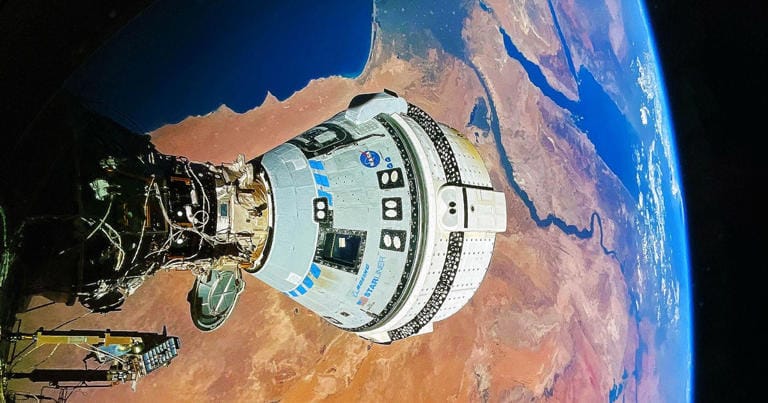NASA and Boeing are still working to get the aerospace giant’s troubled CST-100 Starliner spacecraft back on track. Despite years of development and billions of dollars in funding, Starliner continues to face serious technical challenges.
Recently, NASA revealed that engineers are working hard to resolve Starliner’s in-flight anomalies, with upcoming propulsion system tests set to determine the fate of the project. However, the big question remains: Will Starliner ever become a reliable option for NASA’s crewed space missions?
Boeing’s Starliner: A Spacecraft Plagued by Problems
Boeing was once seen as a strong competitor to SpaceX under NASA’s Commercial Crew Program. However, while SpaceX’s Crew Dragon has completed a dozen successful missions to the International Space Station (ISS), Starliner has fallen behind due to technical failures, delays, and safety concerns.
Some of the most serious issues include:
✅ A failed uncrewed mission in 2019 due to a software glitch that nearly led to a catastrophic failure.
✅ A troubled first crewed flight in 2023, where overheating issues left NASA astronauts Suni Williams and Butch Wilmore stranded in orbit for months.
✅ Major thruster malfunctions, causing overheating in the module’s “doghouse” section, which is critical for propulsion.
These problems have made NASA hesitant to approve another crewed Starliner flight without significant safety improvements.
NASA and Boeing’s Plan to Fix Starliner
Despite repeated failures, NASA and Boeing are pushing forward with efforts to get Starliner certified for human spaceflight. According to a recent update, teams are focusing on:
🔹 Testing and modifying the thrusters to prevent overheating.
🔹 Upgrading thermal protection systems in the “doghouse” to regulate temperatures.
🔹 Adjusting thruster pulse profiles to prevent excessive heat buildup.
NASA’s Commercial Crew Program manager Steve Stich stated that Starliner’s next flight attempt could happen late this year or early next year—but only if the ongoing tests prove successful.
Boeing vs. SpaceX: Why Starliner Keeps Falling Behind
NASA awarded contracts to both Boeing and SpaceX in 2014 to develop independent spacecraft for crewed ISS missions. However, the competition has been one-sided:
| Company | Spacecraft | Success Rate | Issues |
|---|---|---|---|
| SpaceX | Crew Dragon | 12+ successful missions | Minor adjustments, but fully operational |
| Boeing | Starliner | No successful missions yet | Multiple failures, safety concerns, and major delays |
While SpaceX’s Crew Dragon has already proven itself as a safe and reliable spacecraft, Starliner is still struggling to complete a successful mission.
Can Boeing Save Starliner, or Is It Doomed?
Boeing has already lost over $2 billion on Starliner, but NASA and Boeing insist they are committed to making it work. Boeing’s new CEO, Kelly Ortberg, has reaffirmed the company’s dedication to fixing Starliner’s problems and ensuring it becomes a viable alternative to SpaceX.
However, doubts remain. Some experts believe NASA may eventually abandon Starliner altogether and rely solely on SpaceX and future commercial spaceflight providers.
For now, the next round of testing will determine whether Starliner has a future—or if it becomes another failed space program.
Conclusion: A Critical Moment for Boeing and NASA
NASA’s decision on Starliner’s next launch attempt will be a turning point for Boeing. If the upcoming fixes work, Starliner may finally become a reliable spacecraft for crewed missions. If not, Boeing’s struggles in spaceflight could continue to hurt its reputation and financial stability.
🔹 Will Boeing succeed, or will SpaceX remain the dominant force in commercial space travel?
🔹 Can NASA afford to keep investing in Starliner, or will it move on?
The future of Starliner—and Boeing’s role in space exploration—hangs in the balance. 🚀
